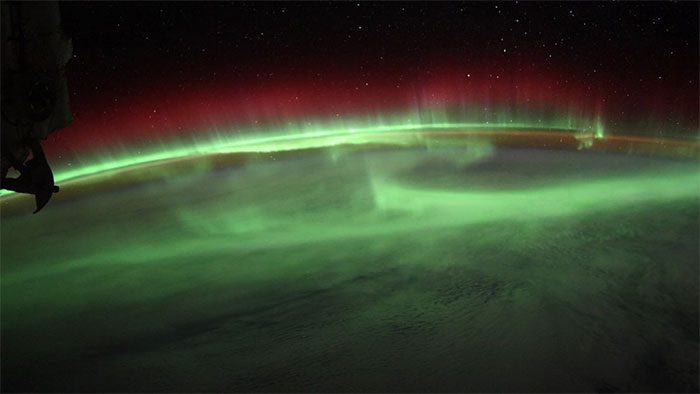Scientists have uncovered a shocking truth behind the spectacular light displays that occur whenever Earth is bombarded by cosmic fireworks from its furious parent star.
According to Space, a type of aurora known as “isolated proton auroras” has revealed the cause of ozone layer depletion originating from space. These phenomena stem from “plasma fireworks” that the Sun frequently emits and occasionally targets Earth.
An international research team led by Dr. Mitsunori Ozaki from the Graduate School of Natural Science and Technology at Kanazawa University in Japan investigated these powerful plasma streams and found that not only do they create auroras, but they also occasionally “pierce” the upper layer of Earth’s ozone.

Aurora captured from the International Space Station ISS – (Photo: NASA)
These holes can be up to 400 km wide, located in the mesosphere of the atmosphere, and fortunately, they do not last permanently. At these holes, ozone nearly disappears completely for about an hour and a half before recovering.
While they heal much faster than stratospheric ozone holes caused by human activity, their impact is still significant enough to affect Earth in various ways.
Without this protective layer, harmful radiation from the Sun can penetrate deeper, potentially disrupting electrical and telecommunications infrastructure. Previously, the charged particles from these plasma fireworks on their “descent” into the atmosphere could also negatively impact astronauts and satellites operating at higher altitudes.
According to the authors, these plasma fireworks have punctured the sky in a way that allows charged particles to infiltrate the magnetic field lines of Earth. The nitrogen oxides and hydrogen oxides released due to the interaction of these particles with the atmosphere have contributed to ozone depletion.
This discovery will provide scientists with additional grounds to predict fluctuations in space weather, which is crucial for many modern technological activities, especially in telecommunications and aerospace.
The study has just been published in the scientific journal Scientific Reports.





















































